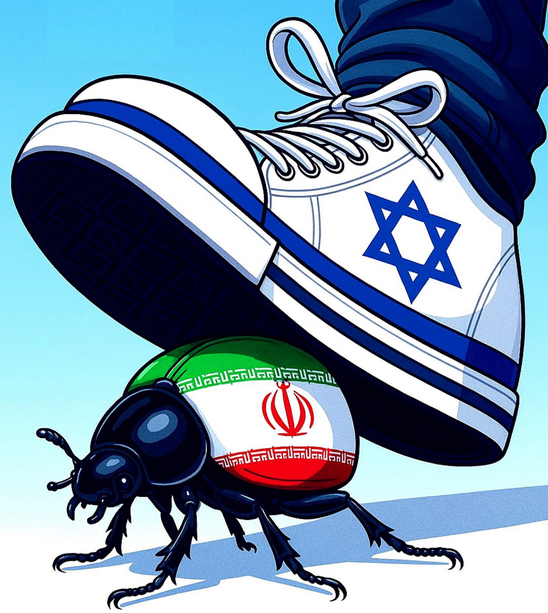Ayatollah Ali Khamenei, Iran’s 86-year-old Supreme Leader, has spent the past two weeks in hiding and staying invisible in a secret bunker, cut off even from his own inner circle, fearing an Israeli assassination attempt. Now, as a fragile ceasefire takes hold, brokered by the U.S. and Qatar, he may finally step back into the light. But the Iran he returns to is not the one he left.
The war with Israel has shattered the regime’s aura of invincibility. Key Revolutionary Guard commanders are dead. Military bases lie in ruins. Nuclear facilities, once the pride of Tehran’s defiance, have been bombed into obsolescence. And the people, long suppressed, long resentful, are whispering questions that would have been unthinkable just months ago: What was it all for?
A Weakened State, a Diminished Leader
For decades, Khamenei’s Iran projected strength through proxies, through nuclear brinkmanship, through its defiance of the West. But in just two weeks of conflict, Israel exposed the regime’s fragility. Air superiority was lost almost immediately. Command structures crumbled. The vaunted missile program, though still partially intact, failed to deliver a decisive blow.
The economic toll is even starker. Years of sanctions had already hollowed out Iran’s economy. Now, the war has accelerated the decay. Oil exports, once the lifeblood of the state, have dwindled. Inflation is rampant. And the nuclear programme justified for years as a matter of national pride now looks like an expensive, ruinous miscalculation.
“This is the beginning of the end,” says Lina Khatib, a visiting scholar at Harvard. “Khamenei may well be the Islamic Republic’s last true Supreme Leader.”
Dissent from Within
Even within the regime’s inner sanctum, cracks are showing. Reports from Iranian media suggest that former officials, perhaps even some still in power are quietly urging senior clerics in Qom to intervene, to push for a change in leadership. The war has made the unthinkable discussable.
Ali Ansari, a leading Iran scholar at the University of St Andrews, puts it bluntly: “There will be a reckoning. The leadership is fractured, and the people are furious.”
A People’s War, Not the Regime’s
In the streets of Tehran and beyond, Iranians displayed a paradoxical patriotism during the war. They did not rally for the regime, they rallied for each other. Shopkeepers slashed prices for refugees fleeing bombed cities. Villagers opened their homes to the displaced. There was solidarity, but not for the government.
Many Iranians, of course, despise the regime. But they also fear what comes next. If Khamenei falls, will it be to a popular uprising or to chaos? The opposition, fractured and exiled, has no clear path to power. And Israel’s obvious desire for regime change complicates matters further. No one wants a revolution imposed from outside.
The Shadow of Repression
The regime’s survival instinct is strong. Even before the war, executions were rising. Now, with the state humiliated, the crackdowns will intensify. At least six people have already been hanged on charges of spying for Israel. Hundreds more languish in prisons.
One Iranian woman, speaking to BBC Persian, voiced a fear shared by many: “A wounded regime is the most dangerous kind.”
The Nuclear Wild Card
Israel may have degraded Iran’s known nuclear sites, but the game is not over. Tehran still possesses enough enriched uranium for multiple bombs, if it chooses to sprint for one. Hardliners in parliament are already pushing to abandon the Nuclear Non-Proliferation Treaty altogether.
For Khamenei, the calculus is grim. At 86, his time is running out. His legacy is in tatters. And the forces that once sustained him such as military might, ideological fervor and fear are fading.
When he steps out of hiding, he will claim victory. But the Iran he faces will know the truth.


